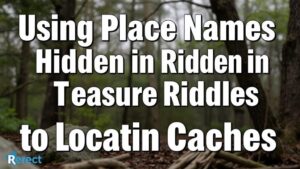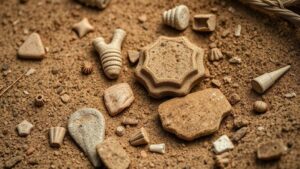Unearthing Soda Bottles From Early 20th-Century Picnic Grounds
Unearthing Soda Bottles From Early 20th-Century Picnic Grounds
The practice of unearthing soda bottles from early 20th-century picnic grounds serves as a fascinating intersection of archaeology, history, and material culture. This article will explore the historical context of soda consumption, the significance of picnic gatherings during that era, and the insights these recovered bottles provide into social behavior, advertising trends, and economic conditions of the time.
Historical Context of Soda Consumption
At the turn of the 20th century, soda became mainstream in America, reflecting broader changes in society such as urbanization and the rise of consumer culture. The introduction of carbonation technology and mass production methods led to an explosion of flavored sodas that were marketed aggressively. For example, the popularity of root beer, cola, and lemon-lime flavors surged, reshaping consumer taste preferences.
According to data from the Beverage Marketing Corporation, the per capita consumption of soft drinks in the United States rose significantly in the early decades of the 20th century, reaching about 16 gallons per person by the 1940s. This shift was accompanied by a wide range of advertising and promotional strategies aimed at integrating soda into social and familial rituals.
Picnic Culture in the Early 20th Century
Picnicking emerged as a prevalent leisure activity in the late 19th and early 20th centuries, especially among the burgeoning middle class. With increased leisure time due to labor reforms and the introduction of the weekend, families and friends sought outdoor opportunities to escape urban life.
- In 1900, roughly 40% of Americans were living in urban centers, leading to a desire for outdoor recreational spaces.
- By the 1920s, organized picnics became popular among various social groups, including churches, schools, and labor unions.
Soda bottles served as key components of these picnics, as families would pack refreshments to accompany the outdoor meals. bottles left behind offer tangible evidence of the social practices and shared experiences of these gatherings.
Methodology of Bottle Recovery
The process of unearthing soda bottles involves systematic excavation, often at historical picnic grounds that have been identified through local histories or oral traditions. Archaeologists typically employ the following methodologies:
- Site Selection: Identifying areas that were popular picnic destinations, such as parks near urban centers or rural retreats.
- Stratigraphic Excavation: Carefully digging through layers of soil to understand the chronological deposition of artifacts.
- Cataloging Finds: Keeping meticulous records of each bottle’s location, depth, and condition for historical comparison.
For example, an excavation in Central Park in New York turned up dozens of glass soda bottles from the 1920s, enabling researchers to analyze the branding and packaging of popular soda brands from that time.
Insights from the Bottles
The bottles retrieved from these picnic grounds provide invaluable insights into early 20th-century consumer habits, marketing tactics, and even public health trends. The inscriptions, designs, and materials used in the bottles tell a compelling story.
- Brand Visibility: Many recovered bottles like those from Coca-Cola and Pepsi reflect the advertising strategies used to engage consumers through colorful labels and innovative branding.
- Shifts in Material Use: The transition from glass to plastic bottles in the mid-20th century can be traced back through the layers of excavated bottles.
- Social Norms: The diversity of bottles found indicates varying social classes and ethnic backgrounds that partook in picnicking, highlighting inclusivity and community building.
A detailed analysis of these findings can reveal shifts in consumer preferences over the decades, such as the rise in healthier drink options in response to changing health narratives.
Conclusion and Future Research
Unearthing soda bottles from early 20th-century picnic grounds enriches our understanding of historical social dynamics, consumer behavior, and cultural practices. Continued research through archaeological excavations and interdisciplinary studies can further illuminate the complex interplay of society and commerce during this transformative period in American history.
As we build upon these discoveries, it is crucial to engage with communities to preserve stories associated with these picnic locations, integrating local narratives into a broader historical context. So, excavating these remnants of the past not only preserves history but also provides a powerful lens through which we can understand our evolving relationship with consumption and leisure activities.
To wrap up, further excavations and analysis of early soda bottles will not only enhance our understanding of a bygone era but also inform contemporary discussions around production, packaging, and consumer practices in today’s society.

